9/18 Natural Killer Cells
1/14
There's no tags or description
Looks like no tags are added yet.
Name | Mastery | Learn | Test | Matching | Spaced |
|---|
No study sessions yet.
15 Terms
Agenda 1: Natural Killer Cells
What is the category of a NK cell?
innate lymphoid cell
lymphoid lineage (like T and B cells) but with innate functions
Agenda 1: Natural Killer Cells
What are the characteristics of a NK cell?
innate lymphoid cell
lacks an antigen receptor
tissue-resident and circulating
functionally analogous to CD8+ T cells
participate in type 1 (Th1) immune responses (transformed cells like viruses and cancer)

Agenda 1.1: Natural Killer Cells’ Purpose
How are NK cells activated? And how are they a bit more advantageous compared to T cell activation?
dendritic cells and macrophages produce cytokines that “sensitize” NK cells, making them more active and effective killers
since they are cytokine-mediated, this makes them much faster than having to activate a T cell
Agenda 1.1: Natural Killer Cells’ Purpose
What do NK cells do? What are they important for?
directly kill stressed, infected, and/or transformed cells (generally viruses or cancer)
important for containment of threat while adaptive response matures
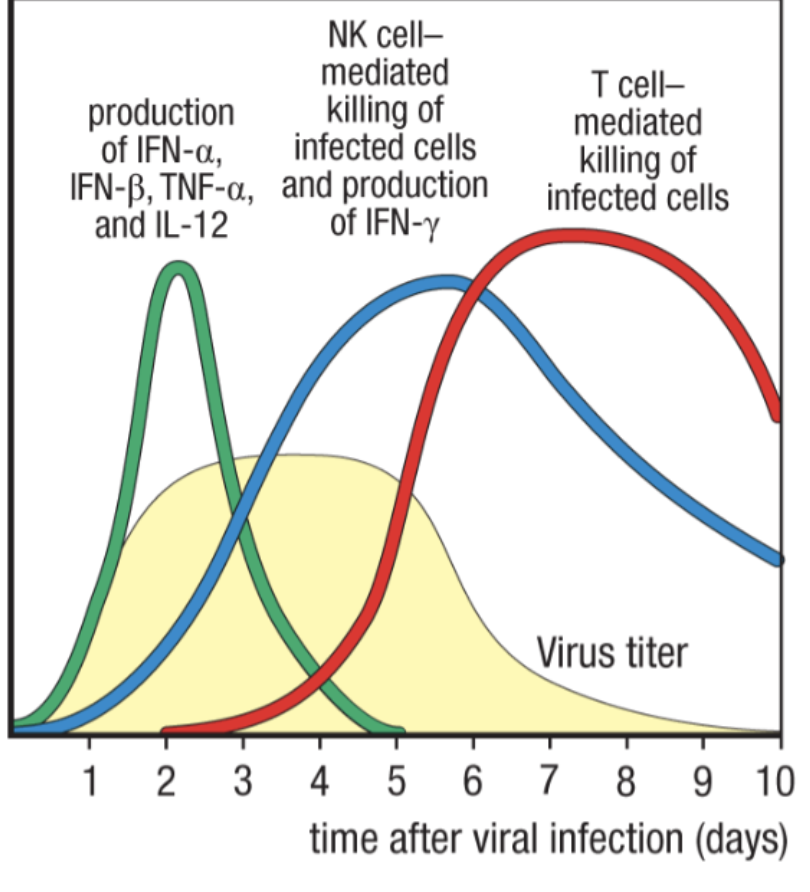
Agenda 1.2: Natural Killer Cells’ Activation
How are NK cells activated by the target cells?
there is no antigen receptor sooo
there is a collection of activating and inhibitory receptors on the NK cells
a balance between activating and inhibitory receptors tell the NK cells whether they should kill that target cell or not
collection expression profile is different between NK cells within an individual
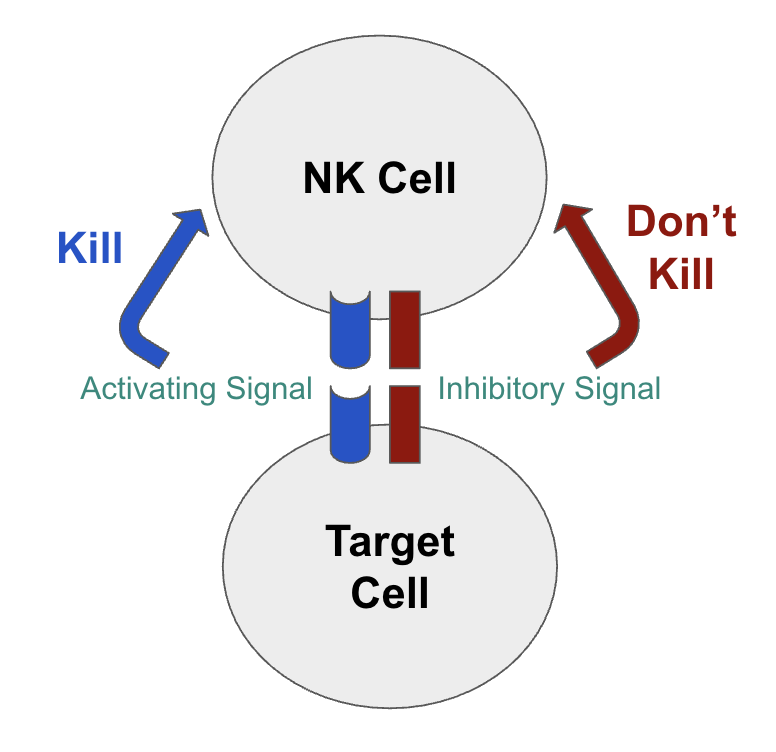
Agenda 1.2: Natural Killer Cells’ Activation
What signals are needed to activate a NK cell from a dendritic cell?
Requires 3 signals just like T cells
signal 1: activating receptors (various)
signal 2: costimulatory molecules (various)
signal 3: cytokines
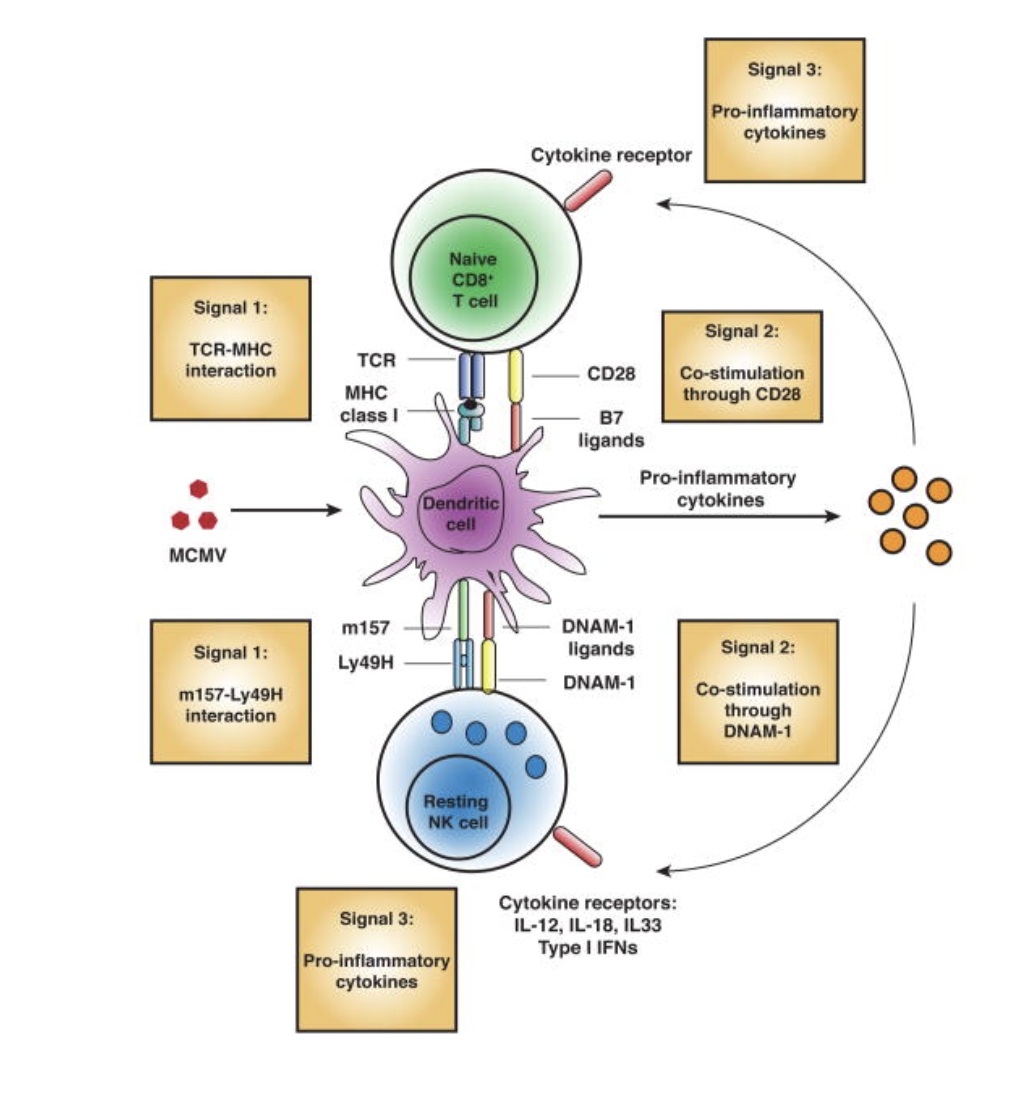
Agenda 1.2: Natural Killer Cells’ Activation
How can activating receptors be activated?
activating receptors
recognize ligands upregulated by stressed or infected cells (PRR signaling, DNA damage, metabolic stress, heat shock, increased proliferation, etc.)
TRAIL binds to death receptors on target cells
induce cytokine production and cytotoxicity
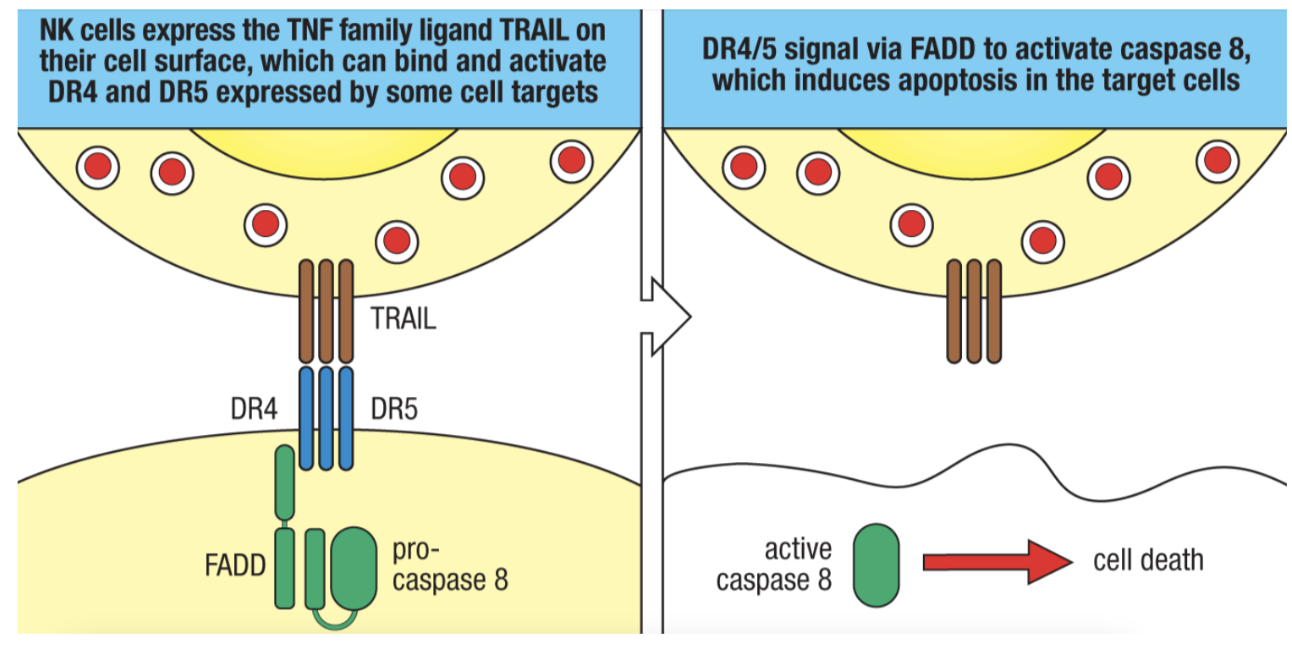
Agenda 1.2: Natural Killer Cells’ Activation
How can inhibitory receptors be activated?
inhibitory receptors
recognize ligands highly expressed by most healthy self cells
these ligands can be downregulated in infected/stressed cells
MHC-I should be expressed by all nucleated cells
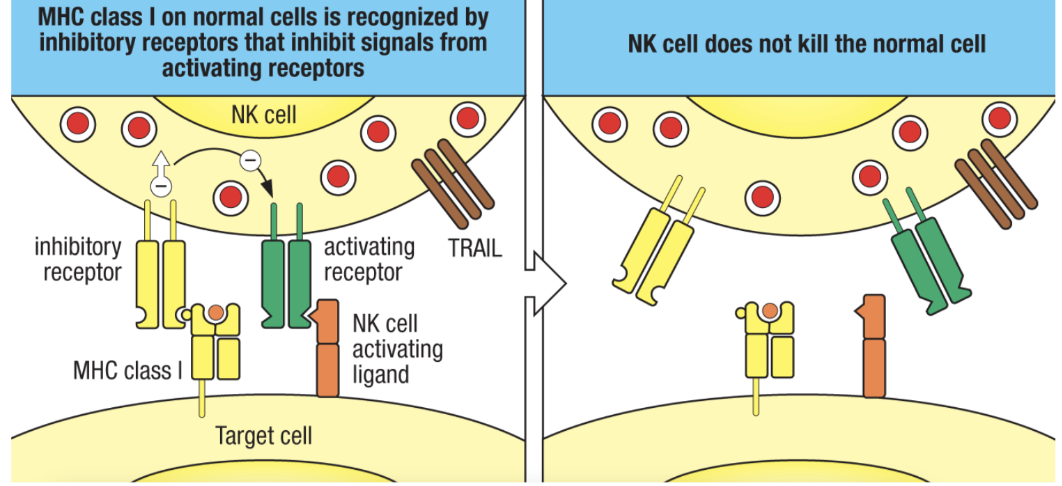
Agenda 1.2: Natural Killer Cells’ Activation
What does CD8+ T cells do? And what is a downside of their function? How can NK cells help with that?
CD8+ T cells hunt dangerous invaders by recognizing the antigen bound to the MHC-I of infectors
however, a lot of viruses/tumor cells may downregulate MHC-I to evade immune responses
sooo, if MHC-I is missing (which it has no normal excuse to be gone), then NK cell would take that as it is a foreign/transformed cell, and would kill
Agenda 1.2: Natural Killer Cells’ Activation
Referring to the last question, if there is no MHC-I, can the NK cell kill it immediately? Why is this crucial?
no, it must have activating receptors activated in order to kill a cell without MHC-I
this is important because our red blood cells do not express MHC-Is, and since healthy RBCs won’t have activating receptors, the signal to kill won’t be activated
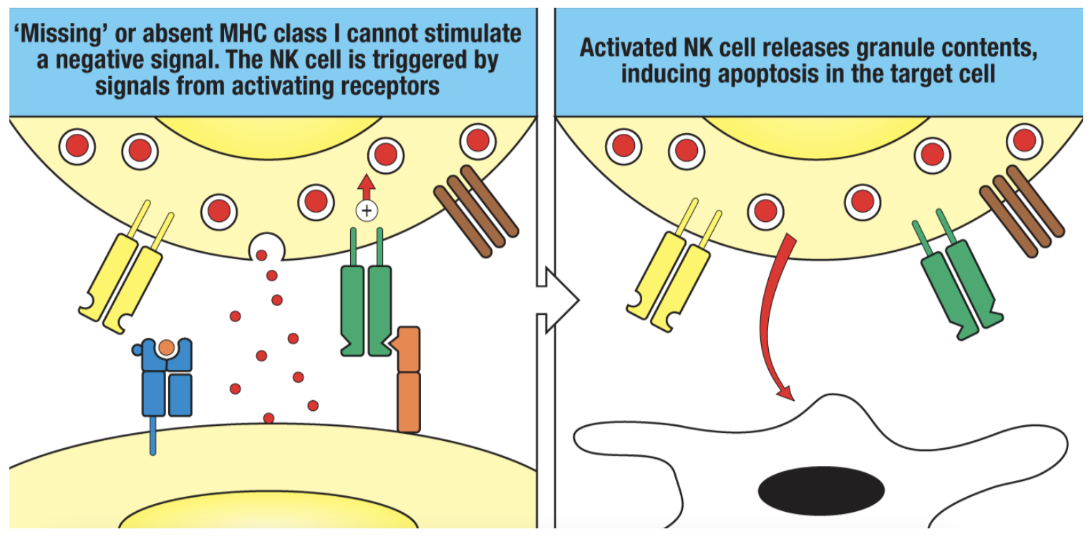
Agenda 1.3: Natural Killer Cells’ Effector Functions
What are the effector functions of an NK cell?
contain cytotoxic granules (granzymes and perforin) that kill targets
TRAIL-TNFR signaling triggers apoptosis in target cells
Fc receptor binding → antibody-dependent cellular cytotoxicity (ADCC)
produce cytokines to further activate macrophages and dendritic cells
Agenda 1.3: Natural Killer Cells’ Effector Functions
What is ADCC a way of?
ADCC is a way for NK cells to interact with the adaptive immune system
so, this method requires activated B cells
antibodies produced by the B cells bind to TC, and then the NK receptors called CD16 bind to the Fc regions on the antibodies. with enough binding (cross-linking), it sends a big signal to the NK cell to kill this TC (the NK cell activated other innate cells that could’ve triggered apoptosis)
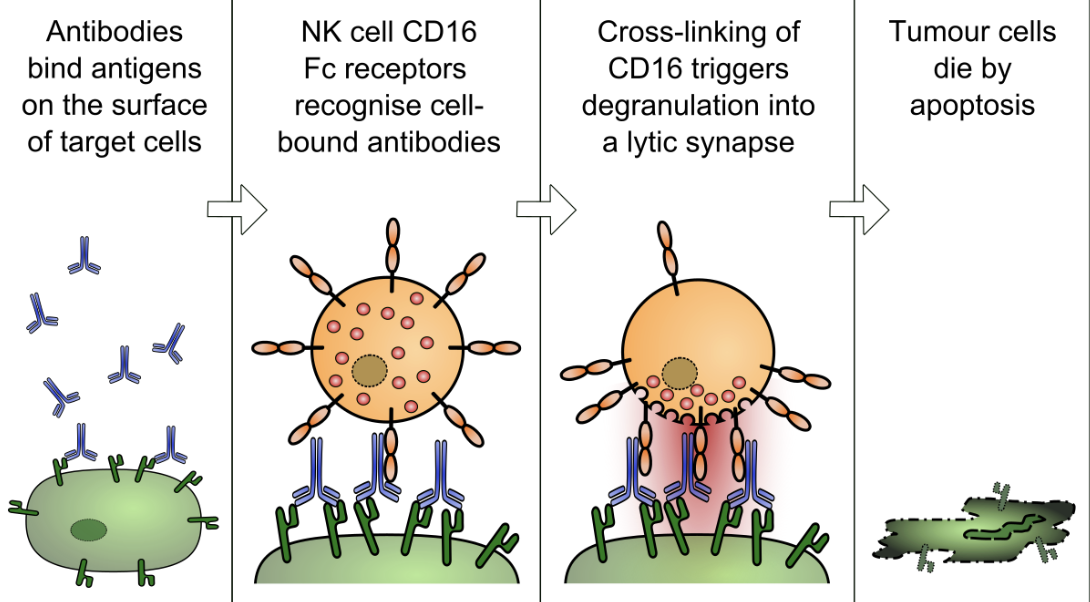
Agenda 1.4: Natural Killer Cells Memory
What are the skills of a memory NK cell?
enhanced cytotoxicity, cytokine production, and secondary expansion
Agenda 1.4: Natural Killer Cells Memory
What is the mechanism of NK cell memory?
not fully understood
some activating receptors bind ligands expressed by common viruses (especially HCMV)
infection with those viruses causes expansion and memory formation of NK cells expressing those activating receptors
each NK cell have their own signaling activating receptors. so for example, if the infection activates receptors 1 and 3, then proliferation would lead to an increase in NK cells with receptors 1 and 3
dependent on cytokine signals
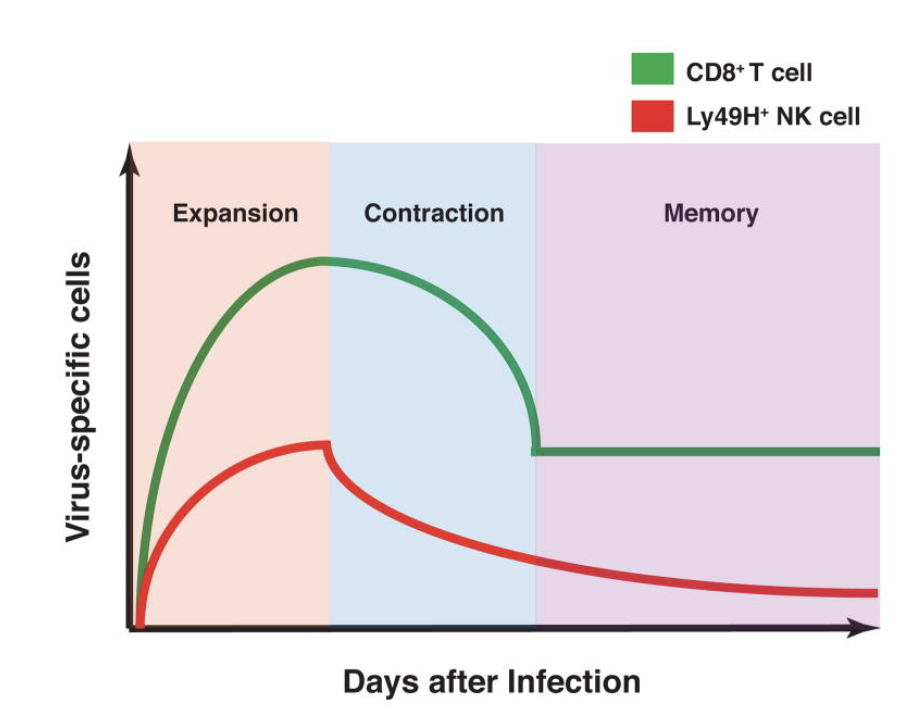
Review Revised antiviral response
slides